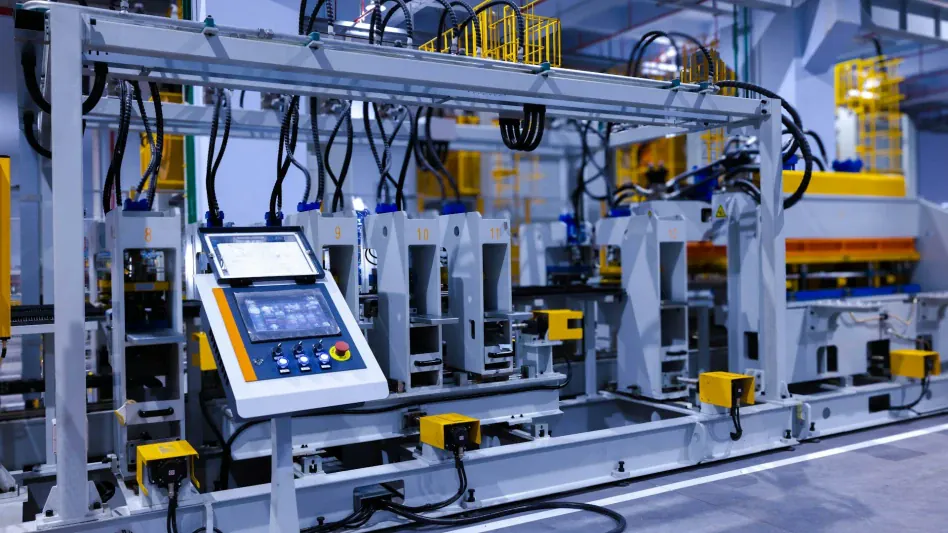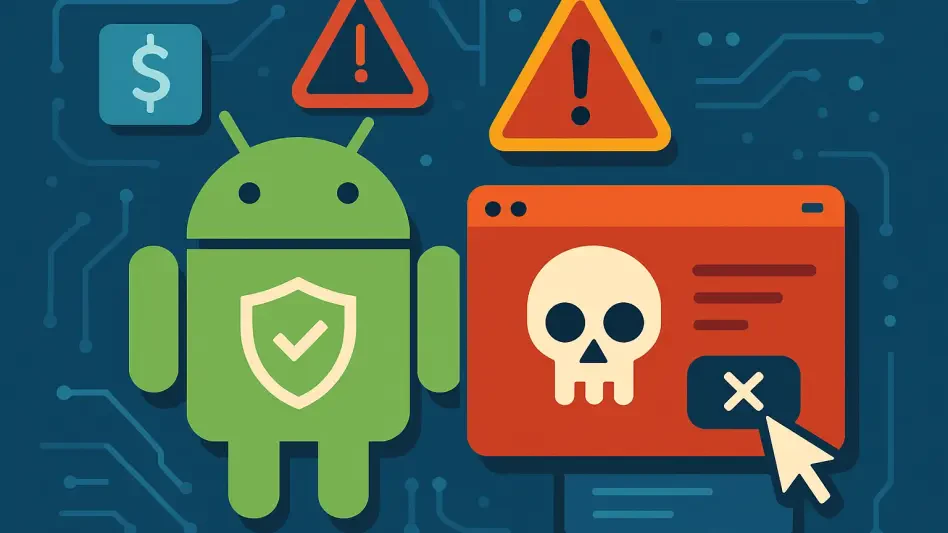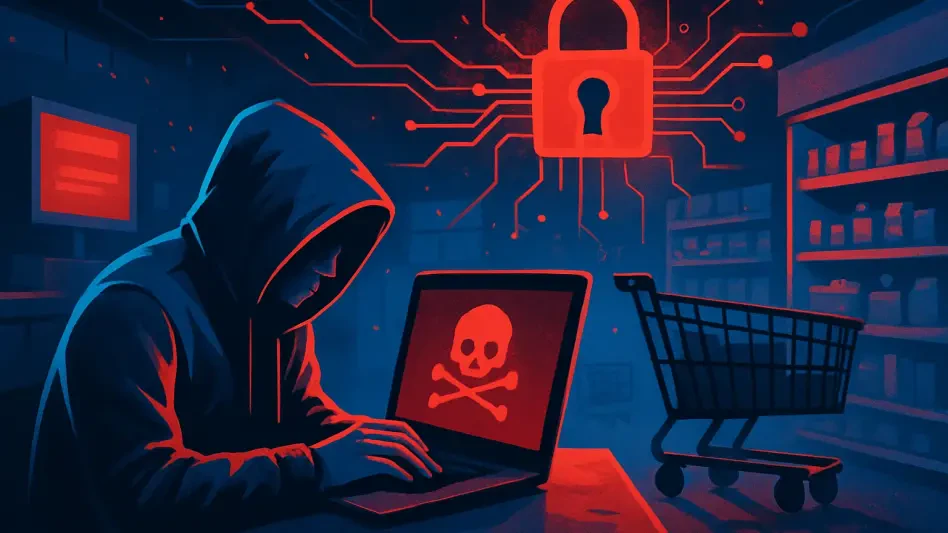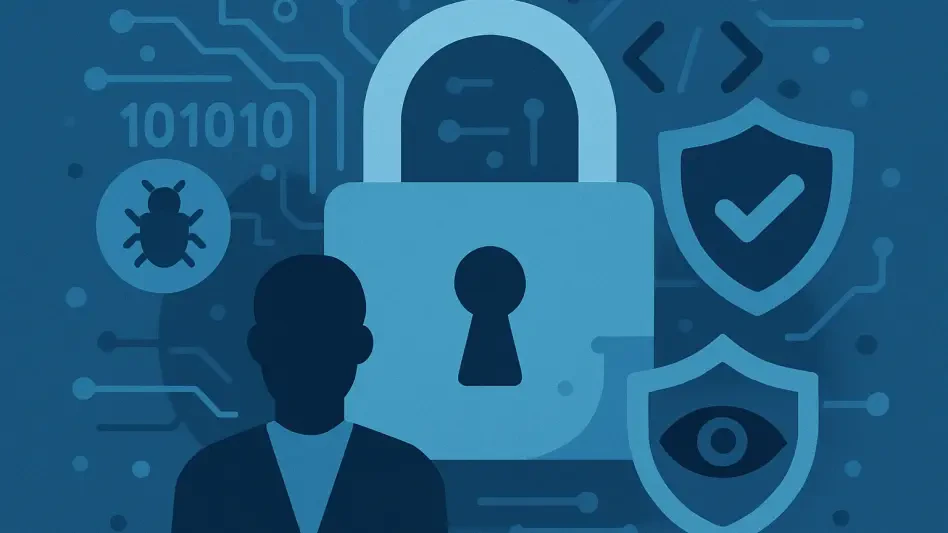Industrial automation has undergone a significant evolution with the advent of Industry 4.0, introducing an unprecedented integration of Information Technology (IT) with Operational Technology (OT). This blending has propelled efficiency and productivity to new heights, incentivizing organizations to automate processes across various sectors, including manufacturing, power generation, and energy production. However, the merging of IT and OT has also brought about a myriad of cybersecurity challenges, posing severe threats to the safety and stability of Industrial Control Systems (ICS). Addressing these cybersecurity vulnerabilities is now more crucial than ever in ensuring uninterrupted operational continuity.
The Importance of Industrial Control Systems (ICS)
Industrial Control Systems (ICS) play a pivotal role in managing and overseeing operations in essential sectors such as power generation, manufacturing, and energy production. ICS include Supervisory Control and Data Acquisition (SCADA) systems, Distributed Control Systems (DCS), and Programmable Logic Controllers (PLC). SCADA systems facilitate remote monitoring and control of processes, DCS manage multiple controlled subsystems, and PLCs enable precise automation of electromechanical processes. Understanding the role and vulnerabilities of these systems is essential for developing robust cybersecurity measures. The integration of IT with OT, while enhancing operational efficiency, has complicated the security landscape. Historically, these systems were isolated, hence less susceptible to cyber-attacks. Now, interconnectedness introduces new attack vectors, making ICS a rich target for cyber adversaries.
The Expanding Cyber Threat Landscape
The integration of IT and OT has exponentially increased the vulnerability of ICS to cyberattacks. Initially operated in isolation, these systems now face exposure to threats similar to those found in traditional IT networks, including malware, ransomware, and advanced persistent threats (APTs). This has expanded the attack surface, making critical infrastructure more susceptible to disruptions and compromises. Notable incidents vividly illustrate the devastating impact of these attacks on essential services. For instance, the Stuxnet worm targeted Iran’s nuclear facilities in 2010 by exploiting vulnerabilities in PLCs, resulting in substantial physical damage. The Industroyer/CrashOverride malware, responsible for a 2016 Ukraine power grid failure, showcased how cyber threats could disrupt electricity supplies. The Triton/Trisis attack in 2017 targeted safety instrumented systems in Saudi petrochemical facilities, underscoring the threat to human safety. These examples highlight the persistent and evolving nature of cyber risks in modern industrial systems, emphasizing the critical need for effective cybersecurity measures.
High-Profile Cybersecurity Incidents
Recent years have seen a surge in cyberattacks targeting industrial automation systems, underscoring their increasing sophistication and frequency. There has been a notable uptick in the number of attacks, with a considerable 70% increase in breaches targeting U.S. utility providers. This rise has been linked to the rapid digitalization of the sector and the continued use of outdated software, which leaves systems vulnerable to cyber intrusions. Additionally, a prominent incident involving the logistics company KNP, where Russian hackers managed to exploit a vulnerable password, stands as a stark reminder of the severe financial and operational disruptions that such breaches can cause. The resultant downtime and data breaches inflicted significant losses, both in revenue and reputation. The introduction of the Transportation Security Administration (TSA) cybersecurity regulations aimed at pipelines and railroads mandated rapid cyberattack notifications and annual assessments. These cases underscore the urgent need for enhanced security measures to maintain operational continuity and safeguard critical infrastructure from increasingly prevalent cyber threats.
Key Vulnerabilities in Industrial Automation
Industrial automation systems face several key vulnerabilities, primarily stemming from their increasing digital complexity. Many ICS still rely on outdated, stand-alone technologies that lack modern security features, rendering them particularly susceptible to cyberattacks. The lack of sufficient network separation is another critical issue; poor segregation between control system networks and IT systems allows attackers to exploit weaknesses and compromise vital infrastructure. Furthermore, the reliance on third-party equipment and services introduces additional vulnerabilities, particularly if these suppliers have inadequate cybersecurity measures in place. Human error also represents a significant risk, with poor security practices, such as weak password management and susceptibility to phishing, exacerbating the vulnerability of these systems. Often, employees are inadequately trained in cybersecurity protocols, further increasing the risk of breaches. Additionally, many industrial automation systems lack modern monitoring solutions, which hampers the ability to detect and respond to threats in a timely manner. Addressing these vulnerabilities through a comprehensive cybersecurity strategy is imperative to secure industrial automation systems.
Essential Cybersecurity Practices
To effectively mitigate cyber risks in industrial environments, organizations must adopt tailored cybersecurity plans. Conducting regular risk assessments is crucial for identifying threats and prioritizing prevention measures. By evaluating the entire system architecture, organizations can pinpoint vulnerabilities and implement necessary safeguards. Network segmentation is another key practice; separating IT and OT networks prevents the propagation of breaches, limiting the reach of potential attackers. Applying the principle of least privilege minimizes the impact of compromised accounts by restricting user and system access to essential operational rights. Continuous system updates are paramount for addressing security vulnerabilities while maintaining control over critical operations. Regular software and firmware updates ensure that systems are protected against known threats.
Employee training is essential for building a security-conscious culture within the organization. Ongoing education on cybersecurity best practices, including phishing detection and password management, helps reduce human errors that can lead to breaches. Developing detailed incident response plans, outlining communication strategies and recovery steps, is vital for ensuring a swift and effective response to cyberattacks. Additionally, deploying intrusion detection systems (IDS) enables continuous monitoring for anomalies, allowing for immediate and appropriate responses to emerging threats. By integrating these practices into their cybersecurity frameworks, organizations can significantly enhance the defenses of their industrial automation systems.
Role of International Standards
Adhering to international cybersecurity standards is crucial for protecting industrial automation systems. The IEC 62443 series provides comprehensive guidelines for securing Industrial Automation and Control Systems (IACS). It covers risk assessment, component requirements, and system design, enabling organizations to follow a structured approach to cybersecurity. These standards ensure that security is integrated into the development and operation of industrial systems, providing a baseline for protecting against cyber threats. Additionally, frameworks like the National Institute of Standards and Technology’s (NIST) Cybersecurity Framework (CSF) and ISO/IEC 27001 are essential tools for developing secure industrial environments. The NIST CSF offers a comprehensive approach to managing cybersecurity risk, emphasizing the importance of identifying, protecting, detecting, responding to, and recovering from cyber threats. ISO/IEC 27001 sets out best practices for an information security management system, ensuring that organizations implement a systematic approach to managing sensitive company information. Implementing these standards ensures that industries adopt established security methodologies, enhancing global defenses against cyber threats and ensuring that best practices are followed.
Addressing Future Challenges
As industrial automation continues to evolve, new cybersecurity challenges emerge that require prompt attention and proactive measures. One significant challenge is the integration of emerging technologies such as the Internet of Things (IoT), cloud computing, and AI-driven automation. While these technologies offer substantial benefits in terms of efficiency and innovation, they also introduce new vulnerabilities. Enhanced security measures, including robust encryption protocols and stringent access control mechanisms, are necessary to protect against these threats. Securing data communication between interconnected devices and ensuring that IoT devices are updated regularly can mitigate potential vulnerabilities. In addition, the growing sophistication of cyber threats calls for advanced detection and prevention mechanisms. Cybercriminals are increasingly employing AI-powered malware, leveraging ransomware-as-a-service models, and using deepfake social engineering tactics. These emergent threats pose significant challenges to traditional cybersecurity measures. To counteract these sophisticated attacks, organizations must adopt advanced defenses such as real-time monitoring, threat intelligence sharing, and proactive incident response strategies.
Ensuring compliance with evolving global cybersecurity regulations is another critical consideration. Organizations must stay updated on current industry standards and regulatory requirements to avoid penalties and ensure secure operations. New mandates, such as the NIS2 Directive for EU members and updated rules for U.S. critical infrastructure, necessitate continuous vigilance and adaptation to maintain compliance. Adopting a proactive stance toward emerging risks and regulatory changes will enable organizations to build resilient and secure industrial automation systems capable of withstanding the evolving landscape of cyber threats.
Conclusion
Industrial automation has experienced a remarkable transformation with the introduction of Industry 4.0. This new era has seen an unprecedented integration of Information Technology (IT) with Operational Technology (OT), leading to enhanced efficiency and productivity across various sectors. The blending of IT and OT has motivated organizations to automate processes on a large scale, with significant advancements in manufacturing, power generation, and energy production.
However, this convergence also brings a host of cybersecurity challenges. The increased connectivity and interdependence of systems create numerous vulnerabilities that can be exploited by malicious actors. These cybersecurity threats pose serious risks to the safety, reliability, and stability of Industrial Control Systems (ICS), which are critical for managing and controlling industrial operations.
Ensuring the security of these complex systems has never been more vital. Protecting ICS from cyber threats is crucial for maintaining uninterrupted operational continuity, safeguarding against potential disruptions, and securing the essential services that industries provide. Addressing these cybersecurity concerns requires a proactive approach, robust security measures, and ongoing vigilance to adapt to the ever-evolving threat landscape.







